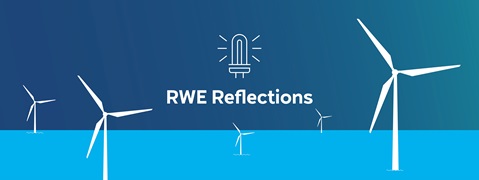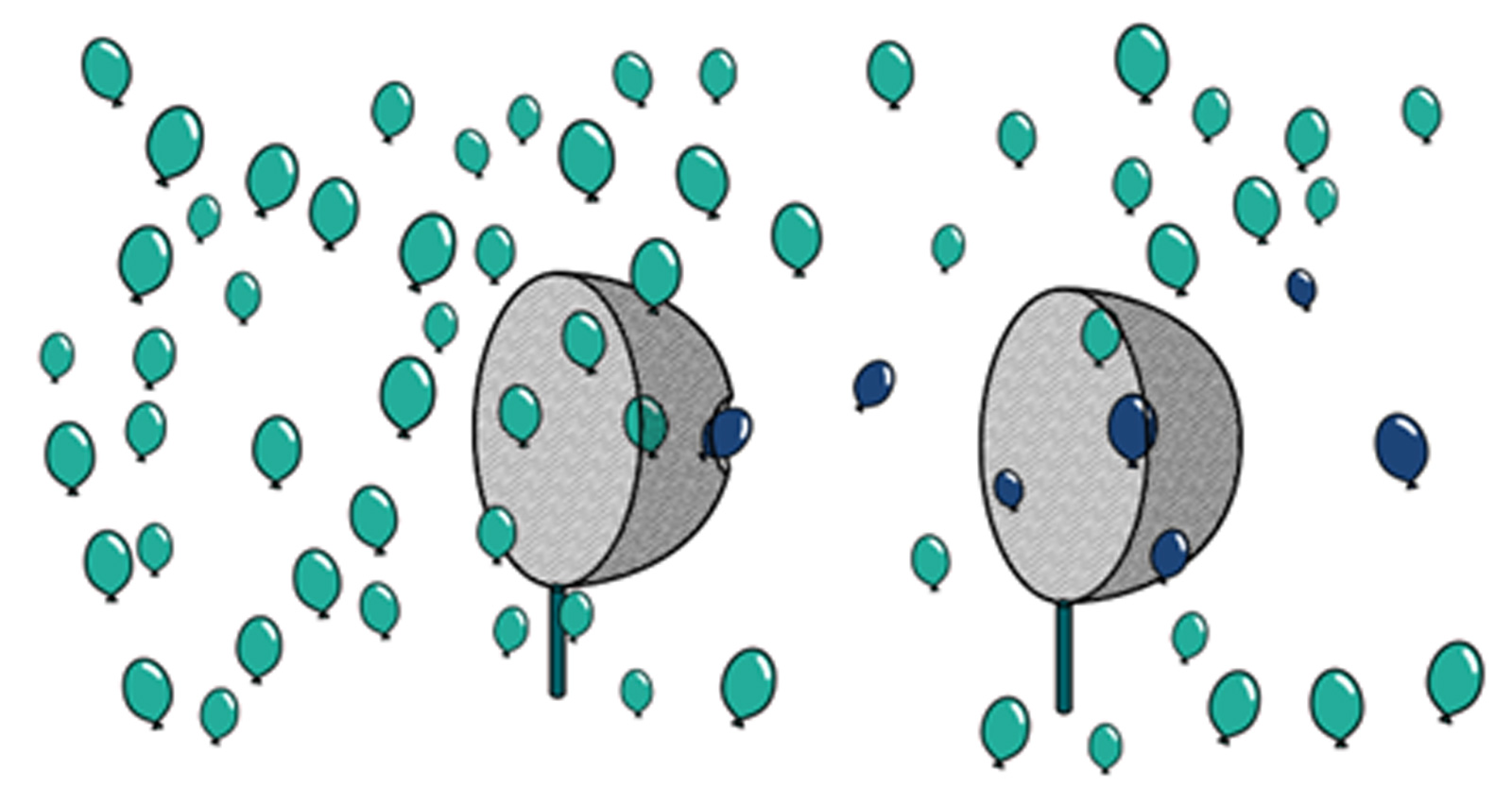



With the buildout of offshore wind farms accelerating, we have seen growing concerns around ‘wake effects’. ‘Wake effects’ describes the situation where one wind farm reduces the wind speed (and hence energy production) of a second wind farm. Wake effects have been raised as a concern during the consenting process for some offshore wind farms in the UK, with calls to “assess” or even “mitigate” these effects.
Before deep diving into the issue, first let’s look at what wake effects actually are.


Wakes are often described as the “wind shadow” behind a turbine. This analogy, whilst helpful for visualising wakes, doesn’t convey an important point: the “wind shadow” is a direct result of generating electricity. Let’s try a different analogy here:
Imagine the energy in the wind as balloons drifting with the breeze. A wind turbine is like a net which catches these ballons, and turns them into electricity (for any wind engineers reading this: the balloons represent the momentum, and this is actually a fairly realistic discreet, linear description of what’s going on!).

The wake is the zone behind the turbine where there are fewer balloons. Looking at this picture, you might think “why would you put another turbine (or windfarm) behind a first one?”
Answer: Firstly, the turbine always lets some energy through, and the wake recovers as balloons drift in from above or the sides. Secondly, the wind blows from all directions – sometimes one turbine is ‘waked’; sometimes the other; most of the time – neither.
When we assess wake losses we have to take the average effect over all weather conditions. Even very large wake effects for one wind direction tend to average out to very small impacts (<1%) over the year.
Wind farms are designed so that the wake effects between the turbines are reduced as much as possible, to maximise overall output of the wind farm.

Mitigation refers to the act of modifying wind farms to reduce wake effects on other wind farms. This could include reducing the overall footprint of a wind farm, changing planned turbine layouts within the same footprint or modifying the operation (e.g. curtailing) of wind farms.
Wake mitigation is like catching fewer balloons in one net in the hope of catching more in another. If the other net fails to catch the balloons you leave, you end up with fewer balloons (i.e. less total generation)
Full wake mitigation between wind farms is not possible. If one farm has removed energy (captured some balloons) – there will be less for a 2nd farm.
If we mitigate by “curtailing” (turning down the power) of the upstream farm, it will leave more energy (more balloons) available for the 2nd farm. But the 2nd farm will only benefit from some of that energy. All modelling shows some of the extra energy always just drifts past the 2nd farm. Those balloons are now missed by both farms, and is just renewable energy ‘lost’ to the UK.
If we mitigate by changing the layout in any way, the results are even worse. The mitigating farm is forced to position its turbines sub-optimally, squashing them closer together. This results in less generation not only when the wake is hitting the other farm, but for all directions. For every wind condition – not just the rare ones where wakes are a problem - the farm generates less energy. The loss seen by the first farm will outweigh the gain at the second wind farm by orders of magnitude – and result in an overall net loss of output from both combined, compared to if mitigation had not been pursued.
Insofar as RWE is aware, no method of mitigation modelled by independent academics or developers has been able to mitigate more than a small percentage of the wake impacts. Furthermore, all wake mitigation methods investigated to date lead to a net loss in generation. Pursuit of mitigation would therefore have profound implications, as it would only act to reduce the overall efficiency of the UK’s offshore wind fleet, hinder the 2030 clean power target, and ultimately push up the cost of renewable electricity.
The Crown Estate and Crown Estate Scotland, which lease seabed to offshore wind developers, employ buffer zones between leased areas within which another wind farm will not be leased without the consent of the existing wind farm. These are designed to manage external impacts and constraints such as, but not limited to, wake effects.


To safeguard the company’s investments, RWE adheres to the highest standards of in-house modelling, working with globally recognised independent institutions and other developers to ensure our approach to turbine interaction modelling is state-of-the-art.
Like all companies working to predict the power from future windfarm , it is a long and involved process from measuring the wind-conditions at the site, through data-cleaning, complex statistics, modelling, and applying learnings from our existing and historic sites. Wake modelling, or “turbine interaction modelling” as we now call it (capturing other effects such as global blockage) is one of the last steps in this process, and relies on the quality of the data and assumptions in all the previous steps.
As noted above, when we assess wake losses we have to take the average effect over all weather conditions. Our analysis suggests that, even very large wake effects for one wind direction tends to average out to very small impacts (<1%) over the year.
On paper, wake mitigation is a nice idea: less wake leads to more energy for downstream farms. However, in practice, this is not the case. Not only is “more energy” just energy lost to the upstream farm, the downstream farm will never manage to re-capture all that lost potential. In trying to mitigate these effects, it is generally necessary to compromise the design of the first farm, resulting in an overall net reduction in output.
Based on real-life examples, we find that these mitigation options can easily lead to a 50:1 ratio of “bad” to “good” – with the upstream farm giving up 50 times more energy than the downstream farm re-captures. In the transition to renewable energy, that’s just too many balloons to lose!

